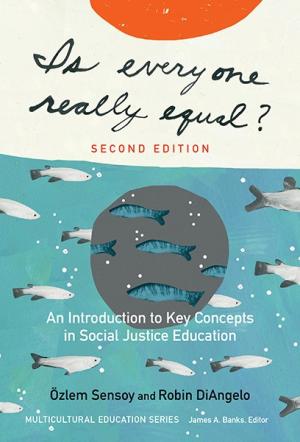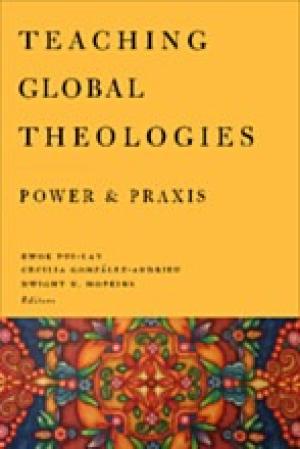Resources by Frederick L. Ware

This book is one among fifty others within the Multicultural Education Series. According to the series editor James A. Banks, these books “[summarize and analyze] important research, theory, and practice related to the education of ethnic, racial, cultural, and linguistic groups in the United States and education of mainstream students about diversity” (xiii). Özelm Sensoy and Robin DiAngelo’s book focuses on social justice. For distinction from the commonplace notion of social justice, Sensoy and DiAngelo use the alternative term “critical social justice.” By critical social justice, they mean: (1) recognition of unequal social power relations at the individual and group levels in society; (2) understanding of one’s place within these relations of unequal power; (3) critical thinking on what knowledge is and how it is produced and acquired; and (4) action informed by the best understanding of what social justice is and sound methods for its realization in society (xxi). Sensoy and DiAngelo provide guidelines for teaching and learning social justice. The book consists of twelve chapters. The chapters include: pictures; charts; figures; vocabulary lists; boxes for definitions of key terms and reminders of ideas and concepts if discussed in a previous chapter; questions for discussion; and instructions for learning activities. The authors intend for persons to read the chapters in their numerical order. The content of the book is cumulative, with each chapter building upon the one that precedes it. There is an underlying logic in the linear progression of the chapters. Chapters 1 and 2 deal with instructional matters, providing students with guidelines for learning social justice course content (6-18), instructors with guidelines for grading student performance (19-21), and both with an overview of critical theory in social justice courses (25-27). Chapters 3 to 5 define the concepts and operations of culture, socialization, prejudice and discrimination, and oppression and domination (36-40, 51-57, 61-73). Chapters 6 to10 define ableism, sexism, racism, and classism and describe how they pervade social institutions (82-86, 104-115, 123-129, 142-144, 156-162, 177-182). Chapter 11 refutes 13 common statements that are used to discredit social justice education (186-197). Based on Sensoy and DiAngelo’s definition of critical social justice, Chapter 12 specifies four learning outcomes for social justice education and crafts possible scenarios for illustration of the kinds of actions for each outcome (200, 203-204, 207, 211). Though written primarily for white readers, Sensoy and DiAngelo’s book merits consideration by all readers interested in social justice education in pluralistic society. The series editor notes that “most of the nation’s teachers are white, female, and monolingual” (xii). Using the terms “we” and “us” throughout the book, Sensoy and DiAngelo acknowledge their associations with this demographic group (120). Given the fact of intersectionality – that any one person has multiple associations – race or ethnicity cannot be a person’s only identification (138, 175). The complexity of human subjectivity warrants the concern of all persons with social justice in a world characterized by ever-increasing diversity.

This collection of fourteen essays, most of which originated from a faculty workshop on Pedagogies for Civic Engagement sponsored by the Wabash Center for Teaching and Learning in Theology and Religion, is divided into three sections. The collection represents a variety of perspectives and the authors engage that diversity through a distinct set of questions. “What is the civic relevance of the academic study of religion, considered on its own terms and in its increased diversity? What unique contributions does religious studies offer the public sphere, especially when seen as separate from the work of religious communities who concentrate on religious belonging? How might the disciplines dedicated to such study offer a distinctive shape and response to the civic mission of the contemporary university?” (xiv-xv). Further uniting the individual contributors’ perspectives are their insights offered towards the development of a model of civic engagement that answers these questions. Section I describes the CLEA model of civic engagement. The employed acronym is drawn from the terms complexity, location, empathy, and action. The terms refer to dimensions, better still, capacities essential for civic participation emerging from the “virtues of civility, reasoned deliberation, and commitment to the common good” (xiii). The intellectual capacity needed for democratic society is evident when persons achieve awareness of the complexity of the world, especially a view of the world beyond the way the powerful control the interpretation of social reality (8-10, 14, 25). As democracy blossoms into pluralism, the person who would be a responsible citizen must exhibit awareness of his or her social location and point of view relative to that of other persons (15, 27-28). Beyond awareness of difference, he or she must have empathy, namely a sense of connection to others as all are (or should be) in pursuit of the common good (15-16, 31). The responsible citizen must act on what he or she has come to know as true (16, 34). In Section II, various strategies for teaching civic engagement are described. Among the various methods used for teaching civic engagement is reflective writing which is summary and evaluation of different points of view relative to one’s own view (49, 50-53). In critical assessment of texts and media, students learn to interrogate symbols, internet (websites), newspaper and news programs, visual and performing arts, and various forms of entertainment (49, 53-54, 88-89, 95) but also learn how they may be used responsibly (100-102). Field trips are immensely helpful aids in teaching (49, 54-55, 77-80, 119-121). Another method of teaching civic engagement is community-based learning which involves teachers and students going into the community as well as representatives from the community visiting their classroom (49, 55-56, 66-71, 110, 112, 136-137). Engagement may also be taught through students’ involvement in community service projects designed to address a need or problem in a community (49, 57, 110, 112). Ascetic withdrawal, for example, in the form of abstinence from or limiting use of cell phones, smart phones, email and texting, impulse buying, consumption of fast-food, use of products made through exploited labor, may enable students to empathize with other persons adversely affected by American consumerism and to discern and cease the unhealthy habits they have formed through compulsive behaviors (93-94, 151, 155). Successful teaching requires creativity in the selection of instructional methods as well as discernment of the combination of methods, two or more, that will lead to achievement of specified learning objectives (58-59). Section III goes further into defining civic engagement and locating it within the curriculum. Civic engagement is defined as participation in political processes such as voting, development of relationships, and collaborations or partnerships that lead to policy that contributes to the common good (165, 167, 170, 175). Civic engagement is not only local and national but also global (184). It is connected to, inseparable from, the idea of social justice (185). Also, it is connected to advocacy, not taking a political position but rather “taking a side in a debate and arguing for it” (209-210). Disagreement about the relation of and distinction between religious studies and theology is resolved in the consensus that both function best as means for analysis and critique of societal and cultural traditions that result in privilege and inequality (236). Whether in religious studies or theology, the course offered in civic engagement is an opportunity for students and teachers to practice democracy (17, 188-190, 246-247). In spite of the charge that the described teaching methods are difficult to grade and are not academically rigorous (37-39, 218-220), this volume of essays merits consideration. It is a rich resource on instructional methods. The combined essays offer a substantive definition of civic engagement. Most importantly, the collection correlates teaching method to the cultivation of capacities needed for life in democratic society.

This collection of ten essays examines globalization (the radical diversity and complex interconnections that characterize the present state of human existence in the world) and offers various methods for teaching and doing Christian theology in this context. Globalization has arisen, in large part, from the colonial expansion of western European nations, through trade and commerce, migration, travel, and mass communication, and has resulted in a crisscrossing and blurring of national and cultural boundaries (12, 40, 145). The first century Marcan imperative for Christians to “go into all the world” that was at first aspirational is now the reality of Christianity in the twenty-first century. The collection is divided into three sections. Part I defines globalization and encourages theological educators to take seriously not only the current pluralism in the world but also the diversity within Christianity both presently and historically (14, 29, 46). Part II examines the concept and practice of theological education, inclusive of methods for encouraging seminary students’ positive engagement with persons of other faith traditions (104). Part III goes further to suggest how theological educators can enable their students to achieve a deeper understanding of being and acting as persons of faith in global community. Just as important as the divisions of the collection are the prominent themes in this volume of essays. Some of these themes are: intentionality in seeking, welcoming, and appreciating encounters with other religions (51, 92); the role of theology in public life in addition to its functions in Christian churches and communities (12); the importance and desirability of dialogue in teaching theology as well as in the encounters between different religions and cultures (42, 54, 83, 109, 150); the enhancement of systematic theology and theological education through comparative studies and comparative theology (47, 100, 104, 109); the interrelatedness and mutual influences between local settings and global networks (79, 146, 165-166, 173); social justice as the common good and essential feature of global community (58-59); and global citizenship as participation in global networks and responsibility for improvement of the same by exposing and challenging systems of oppression and by working for social justice (59, 67, 88, 126). The collection represents a noteworthy start to critical reflection and modifications in teaching Christian theology in light of the diversity and pluralism resulting from globalization. The essayists describe their use of pedagogical tools such as field trips (51), sacred texts from various religions (52), roundtable discussion (152-160), service and study abroad (81-84, 169), non-western cultural sources (92-99), comparative studies in religion (52, 100), music and language arts (117-120), and autobiography for reconstructions of identity (78, 168-171). Further work is needed in analysis of the shifts within Christianity itself. Several of the essayists acknowledge that demographic shifts are tilting the population growth of Christianity towards the Global South – Africa, Asia, and Latin America. One essayist asks the question: What new or alternative interpretations of Christian doctrines will emerge in these areas? (38). Postcolonial theologies are already taking shape. Christian theology in the future will likely be the product of mutual learning between the Global South and the Eurocentric Global North.